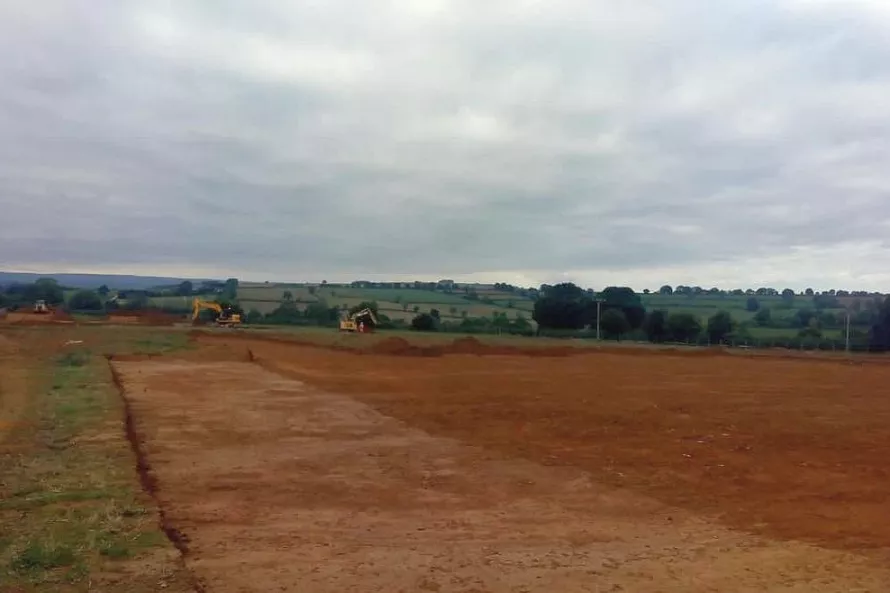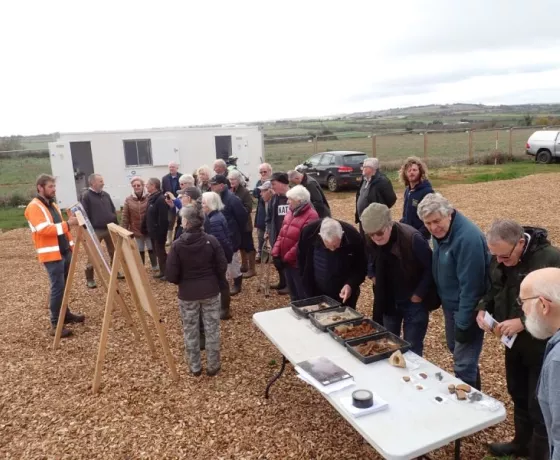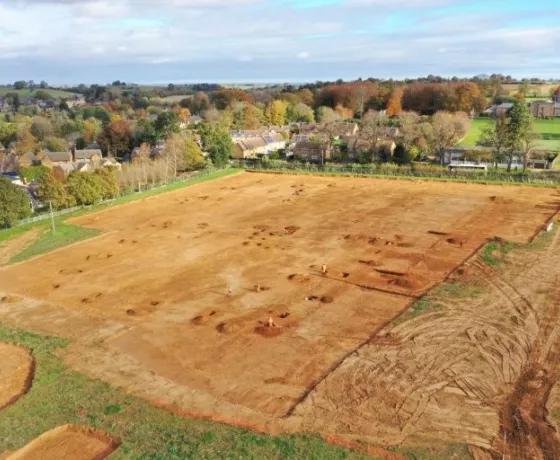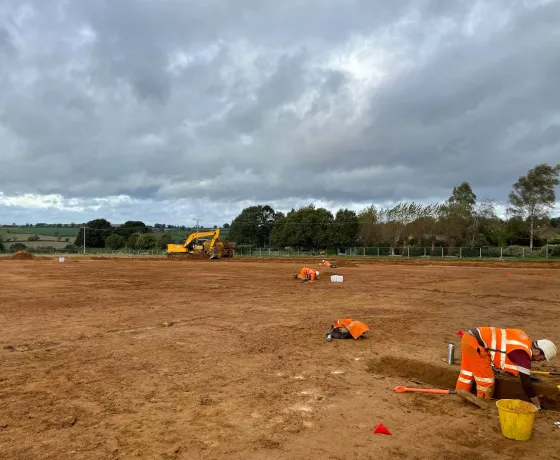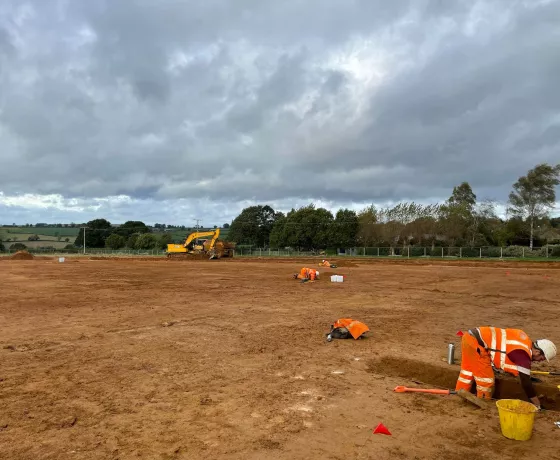Week 2 saw the continuation of the site strip, the excavation of our first archaeological feature and the recovery of our first artefact.
In last weeks update I mentioned the challenges of stripping the site due to overhead cables crossing the excavation area. There are strict guidelines on how to safely work under overhead cables, the key requirement being that nothing should come with a certain distance of the cables. This distance varies based on the voltage of the cables, but in our case we must maintain a 3m clearance. So that we could progress our works, we brought in a second machine onto site which is smaller ensuring there is at least 3m between the top of a the machine cab and the cables. The machine is also fitted with a bit of kit called a boom restrictor, this limits the height the operator can raise boom of the machine. Thanks to Western Power who measured the clearance between the ground level of the overhead cables prior to our attendance on site, we knew that the cables are 6m off the ground and therefore the boom restrictor is set to 3m, maintaining that 3m clearance.
Given the restricted movement of the smaller excavator it worked in tandem with the larger machine who loaded the dumper so that the stripped material could be stockpiled away from the excavation area.
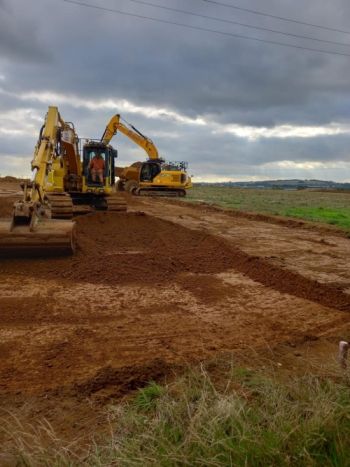
The two excavators working in tandem to progress the site strip under the overhead cables.
After some initial frustration from our machine driver who was missing his usual freedom of control, the stripping progressed well and we continue to expose the archaeological features within the site. The eastern edge of the main enclosure previously identified by the evaluation and geophysical survey has now been exposed along with a few other features, including pits and ditches.
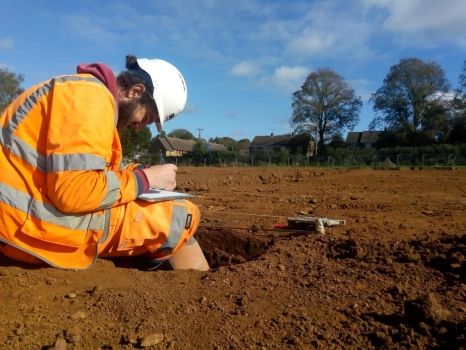
Jack recording the half-sectioned pit.
The first feature that we have hand excavated is the remains of a small pit. Features such as this are half excavated, referred to as half sectioning. This is done so that we produce a cross-section in the centre of the pit showing the material that fills the feature and the profile. The pit is then recorded using photographs, drawings and written notes.
In the past pits like this were often used for storage or the disposal of rubbish, and often both. From this pit we recovered a sherd of Iron Age pottery (c. 800 BC - 100 AD) which has been decorated with incised bands. The picture below shows the sherd fresh from the ground but it will brought back to our office in Oxford where it will be carefully cleaned and reviewed by a specialist. Hopefully we will be able to refine the date of the pottery (i.e early, mid or late Iron Age), although this isn't always possible, and gain a better insight into the decoration including how it was created.
To aid in our understanding of the the pit and what it was used for we retain a proportion of the fill, known as an environmental sample. Obtaining samples like this is essential for the recovery of small and tiny plant and faunal remains, such as cereal grains, seeds, chaff, charcoal, insects, small animal bones, fish bones and pollen. All these items aren't often visible to the naked eye while excavating on site. By recovery material such as this from environmental samples we are able to gain vital information of economy, diet, agricultural practices and the landscape surrounding past settlements. Over the course of this project we will collect environmental samples from a range of features of different types and dating from different periods.
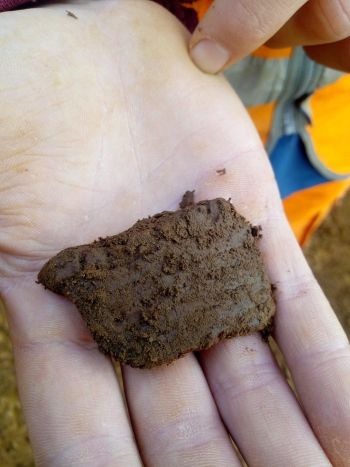
Iron Age pottery fresh from the ground.
Hopefully this is the first of many artefacts we will recover over the course of the project. We are now approximately 50% through the initial stripping phase and will be slowing increasing the number of Archaeologist on site to help excavate and record the remains exposed.
Other posts in this collection
Read our latest posts about the archaeological investigations at Sibford Ferris.

